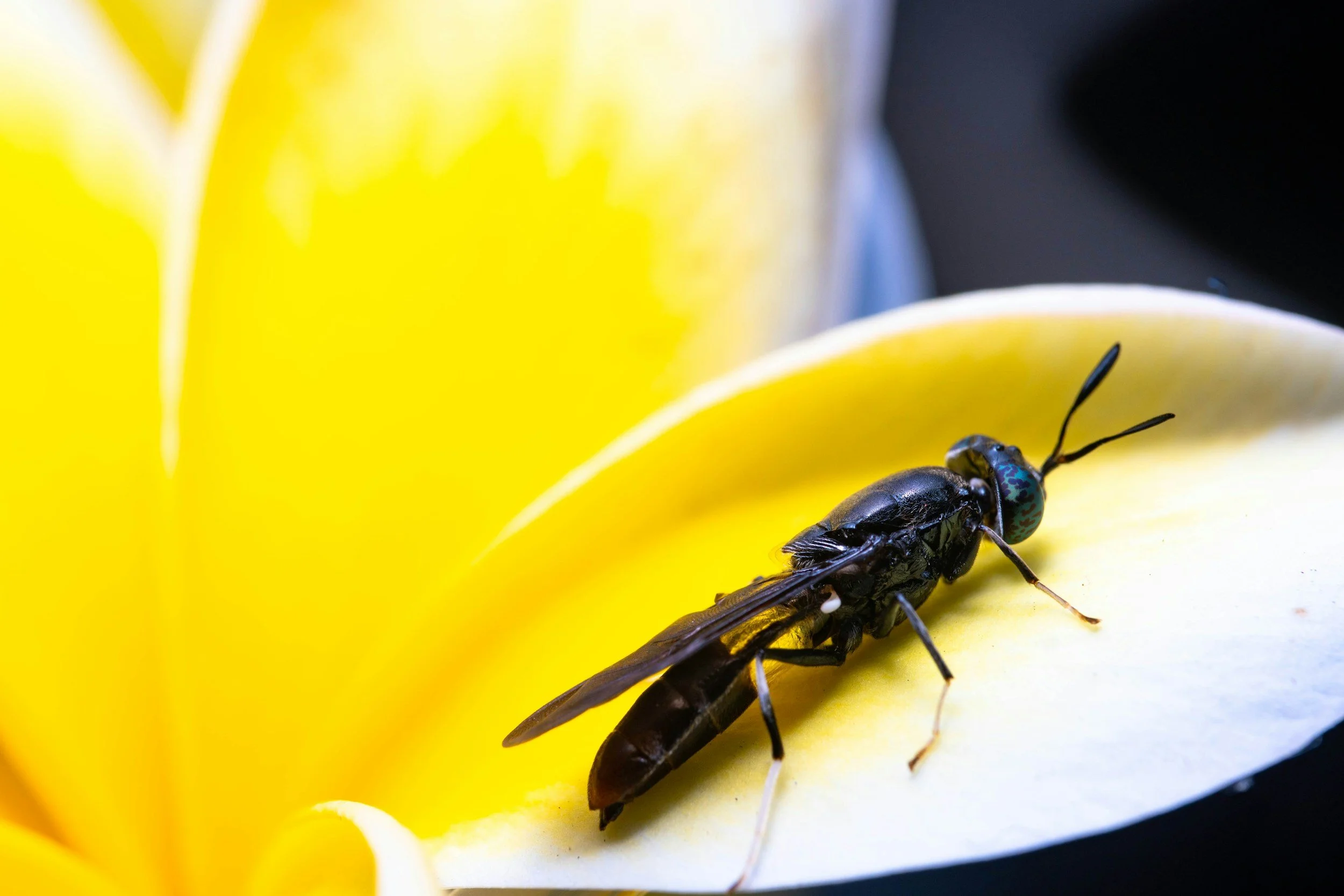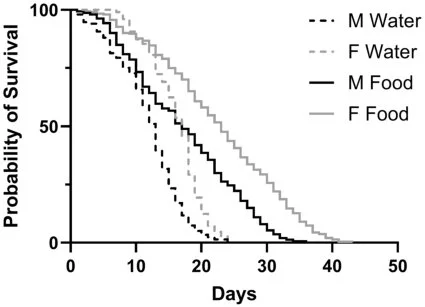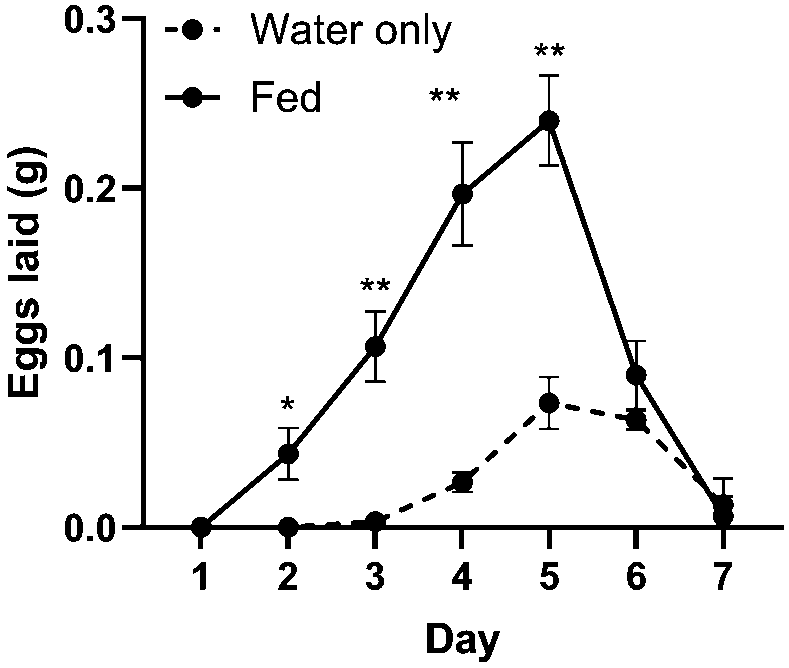Publication Alert: Black Soldier Fly Adults Definitely Can Eat - Here’s What to Feed Them
Adult BSF resting on a flower.
Dietary preferences and impacts of feeding on behaviour, longevity, and reproduction in adult black soldier flies (Diptera: Stratiomyidae; Hermetia illucens) (Barrett et al. 2025; Journal of Insects as Food and Feed)
Acknowledgement of Funding and Conflicts of Interest: Rethink Priorities provided funding from EA Animal Welfare Funds to EAW at Holy Family University for this work. Meghan Barrett reports a prior relationship (ending in 2023) with Rethink Priorities that includes: consulting or advisory.
A common misconception is that adult black soldier flies (not the larvae, the adults!) cannot or do not eat. However, research has shown that this isn’t true since, at least, 2016: Nakamura et al. showed that BSF adults would gravitate towards wet piles of sugar (e.g., sugar water) if provided, drink from it, and then live longer. A lot longer. Later research investigated adult digestive systems and mouthparts and found them to be functional; adults have all the enzymes necessary to break down both carbohydrates and protein (Bruno et al., 2019; Oliveira et al., 2016) and may have dietary preferences (Romano et al. 2020). Other research recapitulated the Nakamura findings, including Chia et al., (2018); Klüber et al., (2023); Thinn and Kainoh, (2022); Bertinetti et al. (2019); and the aforementioned studies. In fact, some studies have even shown that providing feed for adult BSF is more important for reproductive output than appropriate lighting conditions (Macavei et al., 2020). And it turns out that this may have been knowledge once known, but lost to time: in 1959, Furman et al. recommended the feeding of adult BSF (Furman et al., 1959). Whatever the case may be, the research is absolutely clear: adult black soldier flies can and do eat liquid feed (much like adult butterflies or aphids eat liquid feeds like nectar or plant sap).
If adult BSF are not fed on farms, this may represent a welfare challenge wherein the animals are not free from hunger or given the opportunity to express natural foraging and feeding behaviors. We set out to investigate BSF adult nutrition, asking:
What carbohydrates and proteins do BSF prefer?
In what ratios do they prefer these dietary components?
How does a preferred diet impact mating behavior, egg lay, and longevity?
In a series of tests, our study demonstrated a strong preference among adult BSF for yeast and molasses, provided as a 1 : 4 or 1 : 8 protein to carbohydrate source ratio, with 5% molasses, 1.25% yeast, and 93.75% water. These ingredients were preferred compared to casein and agar (for protein) and honey and dextrose (for carbohydrates; though dextrose at 10% was not different from molasses).
Longevity increased on the preferred diet by ~25% for both males and females compared to water-only treatments:
Longevity of male and female BSF decreased when provided only water compared with feed (p < 0.0001).
Additionally, mating behavior increased in fed conditions and mating couples were observed over a longer period of time. Egg lay increased by 3.8-fold in the first 8 days in the fed condition compared to the unfed condition (echoing results of increased egg lay in protein-carb diet conditions in other BSF studies; Bertinetti et al. 2019).
Increased egg lay on days 2 - 5 in fed conditions compared to water-only conditions (* = p < 0.05'; ** = p < 0.01).
Keeping BSF adults free from hunger by providing life-stage-appropriate liquid feed with both protein and carbohydrates isn’t just good for their welfare: it’s also good for production goals. Further dietary optimization efforts could reveal even more effective diets for BSF welfare and reproduction, increasing egg yield and decreasing variability in reproduction. Increasing understanding of the biology and behavior of adult BSF can only enhance welfare and production goals in the industry. The most important take-away from this growing body of research by the Waddell lab (who led data collection for this project) and others? Adult black soldier fly can, and do, eat.
(All references throughout found in the original paper)
Want to read more news from the lab?







